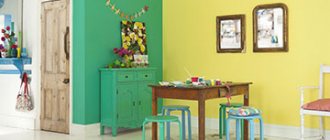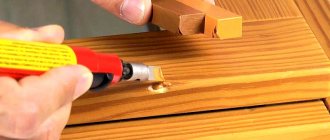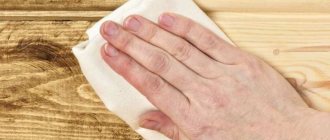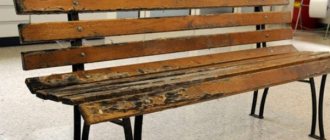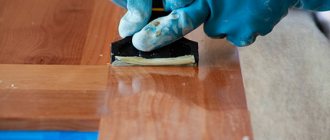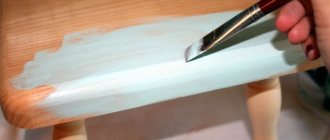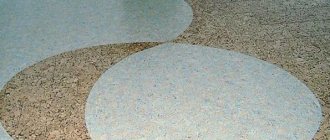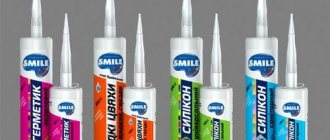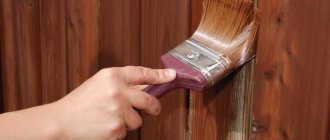Author: Andrey Stekolnikov
Leading technical specialist
Member of the OSMO team since August 2015.
He graduated from technical school and began his professional career in construction. In 21 years he worked his way up to technical director of a plant producing dry building mixtures and paints. Managed the project for the manufacture and installation of facades at the Moscow Hotel. Andrey is a versatile person. By second education - director, graduated from the Moscow State University of Culture and Arts. Heads the OSMO direction for outdoor works and is involved in the development of industrial clients. Andrey is responsible for training employees at the OSMO school. Knowledge base keeper, mentor. The OSMO team appreciates Andrey for his ability to understand the client perfectly and offer the right solution.
Wood is one of the popular building materials. This is explained by the fact that wood has excellent decorative properties, is highly environmentally friendly and has a natural aroma. However, such material requires special care. To preserve properties and prevent the onset of destructive processes, special impregnations are used. One of the varieties of such products is wax oil for interior woodwork.
What is
Oil-wax for wooden furniture is a material used for polishing interior items.
As a result of its use, a protective coating with good performance characteristics appears on the surface.
The main components of the material, as the name implies, are oil and wax. The first agent penetrates even into the lower layers of wood, protecting it from external negative influences, preventing the destruction of the solid structure. Wax forms a hard coating on the surface. It also protects the wood from external negative influences, and also increases the attractiveness of the furniture.
How to properly use wax oil to impregnate wood
- The surface to be treated must be dry, free of dirt and dust (humidity must be at least 20%, wet wood does not absorb oil and dries slowly in a humid environment).
- Before use, the oil must be thoroughly mixed and constantly doing this during the application process.
- To prevent working seams from working, impregnation is applied from edge to edge.
- If the wood is porous, it is better to apply two layers (waiting until the first layer dries).
- After application, remove unabsorbed oil residues from the surface.
- If the wood is constantly exposed to atmospheric influences, then oil wax must be applied every year.
Peculiarities
Oil-wax is a material that affects both the structure of wood and its surface. As a result of its use, as already mentioned, a thin but durable coating is formed, which provides furniture with reliable protection from external negative influences, extending the service life of products without losing their visual appeal. At the same time, the product does not interfere with air circulation. Thanks to this, moisture does not accumulate under the coating and the process of wood rotting does not begin.
Oil-wax is a universal product recommended for use for interior work on any wood surface. Typically, the material is used for polishing interior items in high-traffic areas. The fact is that it forms a protective coating that prevents mechanical damage to surfaces.
In addition, the product has the following properties:
- levels the top layer of furniture;
- adds shine to the base, which improves the appearance of the products;
- prevents drying and cracking of wood.
Impregnation for wood based on beeswax
Wax oil for interior work based on beeswax is used as a polish for wooden furniture, parquet, and any other wood products. Thanks to its composition, it gives the wood shine, nourishes and helps level the top layer of the surface. It has water-repellent properties and prevents wood from cracking and drying out. At a temperature of 35°C, the wax becomes plastic, which does not guarantee a high degree of protection of the wooden coating from negative external factors.
Compound
Vegetable oils are used to make the material:
skeleton
linen
soy
sunflower
As for wax, one of three types of this material is used to produce the product:
Carnauba
Extracted from the leaves of the Brazilian wax palm. Refractory material of increased hardness. It is safe to use because it does not emit toxic substances and does not cause allergic reactions. For this reason, oil with the addition of this type of wax can be used to treat wooden furniture even in children's rooms.
Candelilla
Extracted from the Canelilla bush. Refractory material, safe to use. Does not provoke the appearance of negative reactions in the body, does not emit toxic fumes. This, just like with the previous option, allows you to use oil and wax to treat furniture in children's rooms.
Bee
This wax, unlike the two previous materials, is not refractory. Its melting point is only +350C. However, its manufacturers also use it to make furniture polishes. This is not surprising, because the product helps level the surface, gives it an attractive shine, and creates reliable protection from external negative influences.
In addition to the main components, the material usually contains the following components:
- paraffin;
- solvents;
- driers - elements that reduce the drying time of the product;
- dyes - these elements are absent in colorless compositions;
- additives – protect the base from the negative effects of ultraviolet radiation, which prevents the surface from fading.
Wood wax oil for interior work: application method
When applying oil and wax for interior work, follow these guidelines:
- Prepare the surface before treatment in accordance with the manufacturer's recommendations. It must be clean and dry. Small holes or cracks on the surface are treated with high-quality wood putty. This product is ideal for leveling and filling small joints and damage;
- use hard brushes made of natural or artificial bristles;
- apply the product along the wood fibers;
- provide the recommended humidity and temperature conditions during application;
- Ensure good ventilation of the room after painting to ensure complete polymerization of the product.
Wood wax oil gives the surface of wood products a slight shimmer. Thanks to this product, it becomes resistant to abrasion.
Advantages and disadvantages
Oil-wax has the following advantages:
- Contains natural ingredients. Thanks to this, the product is safe to use. It is non-toxic and hypoallergenic. This allows the material to be used in medical and educational institutions, if such a need arises.
- Versatility . The product can be used on all types of wooden surfaces - different types of furniture, parquet, etc.
- Vapor permeability. This means that the coating does not interfere with air circulation, which means it does not provoke wood rotting or the formation of mold and mildew on it.
- Easy to apply. Even a non-professional can treat the coating with oil-wax if certain instructions are followed.
- Does not change the structure of wood. Consequently, the use of the product does not lead to its destruction.
- Improves the appearance of products. The material levels the surface and gives it a beautiful shine.
- Provides protection for furniture both inside and outside. Thanks to the product, wooden products become resistant to the harmful effects of moisture, high temperatures, and sudden temperature changes. In addition, oil-wax increases the fire safety of interior items.
- Possibility of restoration. If over time, defects appear in places on the coating, it is not necessary to re-treat the entire surface. It is enough to make spot repairs.
- Protects the wood surface from cracking. This is especially true if the furniture is used in a room with heated floors. The fact is that the varnished surface of wood cracks with constant heating and cooling, losing its attractiveness. Using wax oil prevents this problem from occurring.
- Increases the service life of interior items.
No defects were found in the material.
Wood wax oil for interior work: German quality Osmo
The German manufacturer OSMO offers high-quality environmentally friendly wood coatings based on natural oils and hard waxes. Osmo products make any interior woodworking simple and comfortable.
The Osmo line of oils and paints includes:
- Oil wax for interior work Hartwachs-Öl Original and Hartwachs-Öl Rapid with accelerated drying time. Clear coatings highlight the texture and natural color of natural wood.
- Colored oil with wax Hartwachs-Öl Farbig. A solution for those who want to change the shade of wood, making it deeper, darker or, on the contrary, lighter.
- Hard wax oil with natural tint Hartwachs-Öl Effekt Natural. Retains natural color and does not impart yellowness to light wood species, such as beech, larch, ash, maple and others.
- Wood wax oil for interior work Klarwachs. A special colorless coating for hard exotic woods with high density - ebony, wenge, rosewood, merbau, more liquid and easily penetrating into the inner layers.
- Oil with decorative effect Hartwachs-Öl Effekt Silber/Gold. The product is recommended for dark woods - walnut, teak, cherry, oak, including brushed and dark-tinted surfaces.
German oils with hard wax are universal in use. Suitable for any wooden surfaces indoors - floors, walls and ceilings, countertops and furniture, windows and doors, and even children's toys.
The branded product Hartwachs-Öl Original can also be used in rooms with high humidity.
Varieties
There are several ways to classify material.
Depending on the type of wax:
On hard wax
This category includes products on Caranuba and Candelilla wax. They add shine to the surface and have water- and dirt-repellent properties. Protects the base shade from fading. The materials are safe to use. Suitable for processing any surfaces.
On beeswax
This product acts in the same way as previous materials, but it has a lower melting point, so it does not increase the fire safety of wooden furniture.
Depending on the shade, the following products are distinguished:
- Colorless. There are no dyes in the composition of such materials. Thanks to this, the furniture retains its original shade.
- Colored. Materials containing dyes. They tint the surface, giving it the desired shade.
Depending on the type of wood, products are allocated for oak, pine, etc.
Both colorless and colored products have the same properties. The only difference is that the latter tint the furniture, while the former do not.
The main advantages of using wax oil for wood
- vapor permeability – wood wax for interior work, on the one hand, provides an excellent opportunity to create a “breathable” surface, on the other hand, when such a product is applied, a protective layer is formed on the surface;
- the ability to treat a specific area - if you need to restore certain damaged areas where oil and wood wax were applied for finishing and interior work, then you will only need to treat the necessary areas; there is no need to completely renew the entire coating;
- preservation of natural texture - wood wax for interior work makes it possible to preserve the natural pattern of wood.
Oil with accelerated drying time is an excellent professional product that is ideal for treating the following surfaces:
- solid board;
- piece parquet;
- engineering board;
- furniture surfaces;
- parquet board.
Colorless wood wax oil is optimal for wooden floors. When using Hartwachs-Öl Rapid from OSMO, the pores of the wood remain open. When using it, no intermediate sanding or primer is required. An important advantage of the product is that the drying time of the oil is only 5 hours (at an air temperature of approximately 23 ° C and a relative humidity of approximately 50%).
Hartwachs-Öl Rapid is a product with accelerated drying time. This feature of the oil should be taken into account when working with it. The time when you can walk over an open surface to correct defects that have arisen during application of the product is limited.
Selection rules
When choosing wax oil, consider the following points:
- Composition of the material . Experts recommend giving preference to products containing hard waxes, since they are refractory and have increased strength, which means a longer service life of the coating. In addition, when choosing a material, you should pay attention to the presence of allergens, which include orange oil, etc. It is not recommended to purchase such products, as they can provoke negative reactions in the body.
- Type of wood. The wax oil must be suitable for processing the specific wood from which the interior items are made. The appropriate markings are indicated on the material label.
- Furniture shade. Colorless products are suitable for all interior items. Colored materials are chosen depending on the shade of the product.
Expert opinion
Doshin Roman Valentinovich
Cabinetmaker, work experience - more than 15 years
Wood is the best material for making furniture. This is an environmentally friendly product, which indicates its safety for people. In addition, wood is easy to process, looks attractive and, with proper care, lasts for decades. The only “weak point” of the material is the lack of resistance to the harmful effects of moisture. However, this problem is easily solved by oil-wax. It creates a coating on the surface that protects furniture from moisture. The main thing is to choose a quality product. I recommend using hard wax based products. They are easy to apply, create a durable coating and have a melting point of +72-910C.
Oil with wax for interior work: what to look for when choosing
To choose the best wood oil for interior work, you should pay attention to the following parameters:
- composition of components - give preference to oil-to-wax for interior work, made from natural plant waxes, which are more refractory and durable than beeswax; be careful when choosing products containing potential allergens, for example, orange oil;
- type of wood - oil with wax for interior work is available for various types of wood;
- features of the type of coating - oils with wax for interior work can have different color shades, from white to dark, degree of gloss, differ in their characteristics and application features, as well as drying time.
OSMO HARTWACHS OL EFFECT SILVER/GOLD oil is especially popular among customers.
A hard wax product intended for decorative finishing of dark woods, containing metallic pigments. HARTWACHS OL EFFECT SILVER/GOLD oil gives the wood surface a presentable appearance, providing the effect of a silver/golden glow. The product consists of components of natural origin. The quality of OSMO oil is confirmed by relevant safety certificates. The product is optimal for application to wooden floors or furniture surfaces.
Application
To treat wooden furniture with oil-wax, you don’t have to turn to professionals. You can do the work yourself if you follow the following instructions:
Prepare the surface
All fasteners are carefully screwed or driven in so that the caps are as deep as possible into the surface. After this, the holes are sealed with wood putty. This material also masks defects - cracks, etc. if any. After this, take a break until the putty has completely hardened.
The base is sanded
To do this, use a grinding machine or sandpaper.
The surface is dedusted
The easiest way is to wipe the furniture with a damp cloth and wait until it dries.
Perform the first surface treatment with oil-wax
For this, it is best to use a brush with natural bristles. The product is applied along the wood fibers.
Take a break to let the material dry
This usually takes 8-10 hours.
Re-treat the surface
Stop work again to allow the product to harden.
The coating is polished with a machine.
This increases its attractiveness by adding a glossy shine.
Which oil wax is better reviews
Osma hard wax oil review: very good hard wax oil. I use it on cedar tables and countertops with excellent results. I can assure you that with proper application and drying, the wood retains its original wood smell, which also acquires water-dirt-repellent properties.
Review of oil from Tikkurila: when choosing an impregnation for the shelf, there was no doubt about what to take, because there was nothing to choose from, only oil from Tikkurila was available. Of course, I wasn’t happy with the price, but I still needed to soak it with something, so I took it. Later I didn’t regret it at all; it completely justified itself. A liter jar was enough to soak the boards in two layers. There were no strong odors or unpleasant sensations present. Bath procedures with a broom took place on the same day. After a year the shelf looks like new.
Sources:
- https://master-srubov.ru/sovety/kak-vybrat-maslo-dlya-dereva
- https://www.sherwinwilliams.ru/faq/maslo-vosk-propitki-dlya-dereva/
- https://sad24.ru/dom/remont-vnutri/maslo-vosk-dlya-dereva.html
- https://oil-wood.ru/reviews/
- https://banya-v-derevne.ru/uhod-i-zashhita/vosk-i-maslo-dlya-propitki-polkov/
TOP best means
The TOP includes only the best materials with optimal characteristics.
Gappa matte, 0000 colorless
High quality material that can be used for both indoor and outdoor use. This allows the product to be used, including for garden furniture. The product provides reliable protection against aggressive biological environments, the harmful effects of moisture and ultraviolet radiation.
Characteristics:
- processing material – wood;
- hardening time – 24 hours;
- UV protection – yes;
- minimum consumption – 30 sq.m/l;
- gloss level – matte;
- shelf life – 5 years.
Advantages and disadvantages:
- reliable protection;
- faint odor;
- ease of application;
- low consumption;
- high quality;
- wear-resistant attractive coating.
- long drying time.
BIOFA hard professional, matte
High quality material recommended for all types of wood. Suitable for interior work, including processing wooden furniture in a children's room. Forms a water- and dirt-repellent coating on the surface. It is easy to use.
Characteristics:
- processing material – wood;
- hardening time – 24 hours;
- gloss level – matte;
- type of coating – glaze;
- shelf life – 2 years.
Advantages and disadvantages:
- fits well on the surface;
- ease of use;
- can be applied in several layers;
- reliable protection of wood from external negative influences.
- takes a long time to dry;
- a pungent odor that can cause dizziness and headaches.
OSMO TopOil, 3058 clear matt
A high quality product that is recommended for use for interior work. It is safe to use. Does not emit toxic fumes and does not cause allergic reactions. Thanks to this, the material can be used for interior items in a children's room.
Characteristics:
- processing material – wood;
- hardening time – 24 hours;
- gloss level – matte;
- type of coating – glaze;
- shelf life – 5 years.
Advantages and disadvantages:
- good to go to bed;
- high quality;
- suitable for furniture in children's rooms;
- restores the external attractiveness of interior items;
- reliable protection from external negative influences.
- There are no cons.
Oil-wax is a material that creates a protective coating on wooden furniture. Expert advice and TOP best products will help you choose the right product.
Wax mixtures
Impregnating wood with wax in its pure form is the first thing that comes to the mind of a home craftsman. The instructions themselves are extremely simple and look something like this:
| Illustrations | Recommendations |
| Preparation. We will be processing a kitchen knife stand. · Natural beeswax is used as the main composition (it is better to buy it on the market from beekeepers or honey merchants); · We will apply with a brush with natural bristles; · For warming up, it is advisable to have a hair dryer, but you can get by with a household one; · From the dishes you will need a saucepan and a jar for wax. | |
| Warming up the wax. Natural beeswax melts at a temperature of 62 - 70ºС, but it must be melted in a water bath, otherwise it will darken (burn). · Pour water into a saucepan and place it on the stove; · Place some kind of stand or just a rag on the bottom of the pan; · Place wax in a jar, immerse the jar in a saucepan and wait until the wax melts. | |
| Waxing. In order for the heated, liquid wax for wood to be well absorbed into this very wood, the workpiece also needs to be heated. The easiest way is to heat the wooden blank in the oven; this can be done while the wax is melting. Then take a brush and “paint” the workpiece with wax. | |
| Finishing. It is not realistic to apply wax evenly with a brush; as the composition cools, the thickness of the layer will increase, so after application, excess wax must be scraped off the workpiece. For work, you can take a plastic card; it is not advisable to use a knife, as you can scratch the surface. Next, take a hairdryer, point it at the workpiece and rub the heated surface with a cotton cloth. |
Remember the rule common to all recipes: hard wax is never used for cosmetic treatment, much less wood impregnation! The composition should be liquid or paste-like, but not solid.
The above method is good, but it has a number of serious disadvantages:
- The wax hardens quickly and if you have to cover something bulky, for example, furniture, the wax will need to be constantly heated, plus a lot of hassle with cleaning the workpiece after application;
- No matter how you try to rub the workpiece with a rag or felt, you will never achieve shine; the surface will remain matte;
- If you don’t take care of a waxed item, it will become covered with dust and this dust will become ingrained. To restore its original appearance, you will have to repeat the entire cycle again, that is: sand it with sandpaper, cover it with hot wax and rub it.
To call the procedure outlined above a recipe is somehow hard to come by; it’s more of an application technology, I talked about it so that you have an idea of the basics, and now we move on to specific recipes.
Recipe No. 1. Designed for processing furniture
For furniture, the problem of ingrained dust is relevant, no matter how you wipe your furniture, but over time, a coating will still appear on clean wax. To avoid this problem and at the same time not lose in naturalness and quality, our wise people came up with the idea of mixing hot wax with rosin.
Recipe for wax impregnation for furniture.
Rosin acts as a crystallizer and promotes the formation of a durable film on the surface, while the wood will breathe. Turpentine is added as a solvent; it will prevent the mixture from hardening quickly and you will have time to easily treat the surface.
The composition is prepared in a water bath, the sequence of actions is approximately as follows:
- Beeswax is heated to a liquid state first;
- When about half the volume of wax has melted, you can add rosin, and it is advisable to crush the rosin;
- After the wax and rosin are completely dissolved, turpentine is added to the composition and the whole thing is thoroughly mixed.
For interior work, I recommend using gum turpentine; its price is slightly higher, but it stinks less.
The furniture processing technology is slightly different from the option described above.
- In this case, after applying the finished composition, you leave the item alone for 3 hours;
- Next, take a hair dryer and heat the surface, wipe off the excess mixture from it and again let the workpiece cool for another hour;
- At the third stage, with light heating, you actively polish the workpiece; you will not achieve a mirror shine, but you will undoubtedly get a noble sheen.
Wax with rosin and pure wax for wooden floors or walls can theoretically be used, but oil wax is better suited here, which I will talk about a little later, in the corresponding chapter of this article.
Recipe No. 2. Inexpensive exterior decoration
Natural beeswax is very expensive to use for exterior work, plus there is no particular need for a 100% natural impregnation on the outside of a building. Instead of wax, it will be much cheaper to take regular white or some other paraffin.
Inexpensive paraffin impregnation for outdoor use.
Ideally, instead of gasoline, it is better to use purified acetone; it, of course, is more expensive, but the smell disappears much faster. It is also better to take gasoline as pure as possible.
And don’t forget - both acetone and gasoline are flammable liquids. It is generally better to cook large volumes in air, otherwise in a closed room the vapors at high concentrations can explode from any spark.
